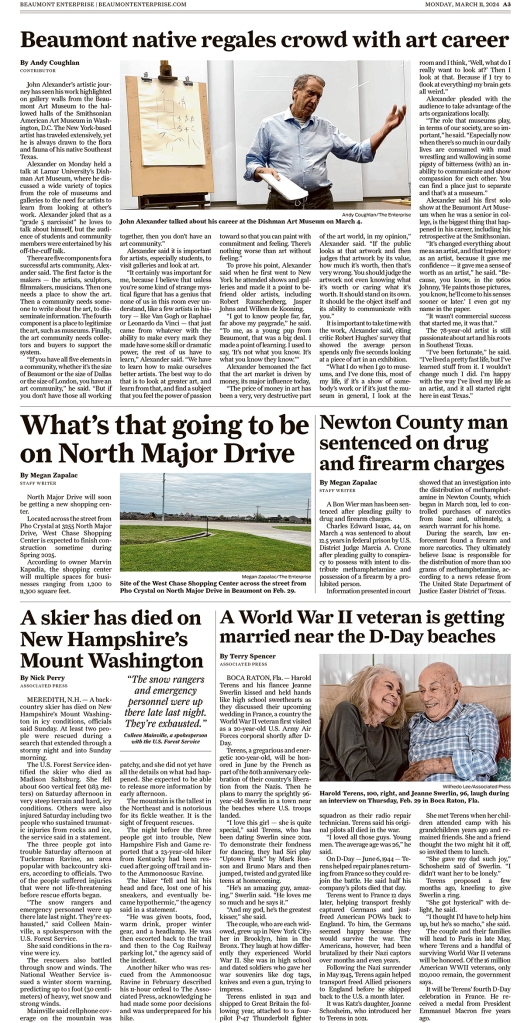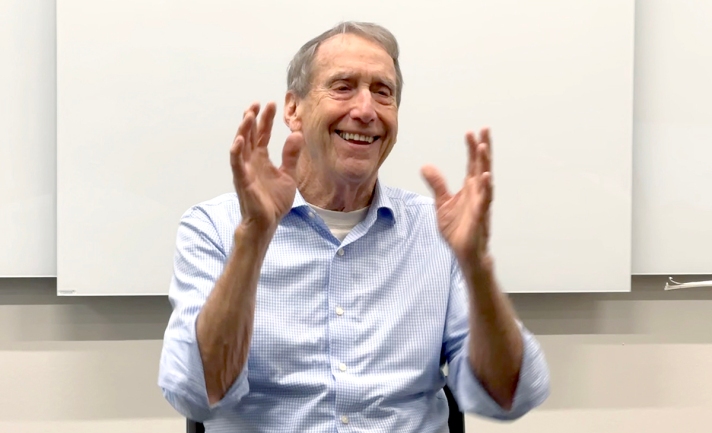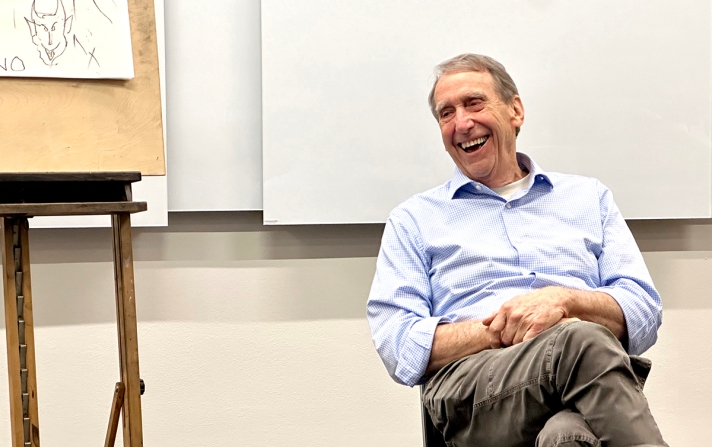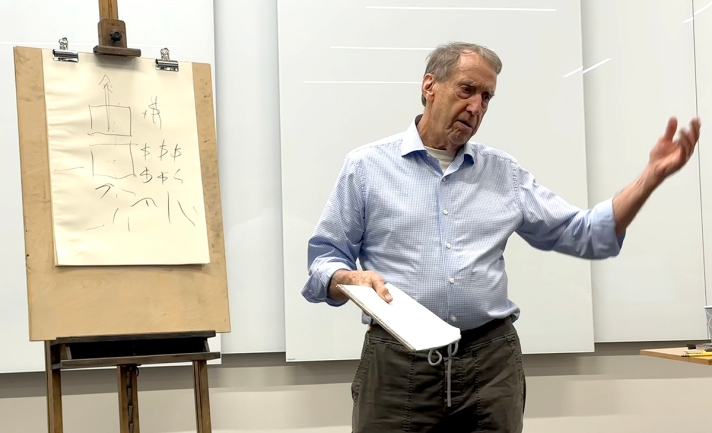John Alexander’s artistic journey has seen his work highlighted on gallery walls from the Beaumont Art Museum to the hallowed halls of the Smithsonian American Art Museum in Washington, D.C. The New York-based artist has traveled extensively, yet he is always drawn to the flora and fauna of his native Southeast Texas.
Alexander on Monday held a talk at Lamar University’s Dishman Art Museum, where he discussed a wide variety of topics from the role of museums and galleries to the need for artists to learn from looking at other’s work. Alexander joked that as a “grade 5 narcissist” he loves to talk about himself, but the audience of students and community members were entertained by his off-the-cuff talk.
There are five components for a successful arts community, Alexander said. The first factor is the makers — the artists, sculptors, filmmakers, musicians. Then one needs a place to show the art. Then a community needs someone to write about the art, to disseminate information. The fourth component is a place to legitimize the art, such as museums. Finally, the art community needs collectors and buyers to support the system.
“If you have all five elements in a community, whether it’s the size of Beaumont or the size of Dallas or the size of London, you have an art community,” he said. “But if you don’t have those all working together, then you don’t have an art community.”
Alexander said it is important for artists, especially students, to visit galleries and look at art.
“It certainly was important for me, because I believe that unless you’re some kind of strange mystical figure that has a genius that none of us in this room ever understand, like a few artists in history — like Van Gogh or Raphael or Leonardo da Vinci — that just came from whatever with the ability to make every mark they made have some skill or dramatic power, the rest of us have to learn,” Alexander said. “We have to learn how to make ourselves better artists. The best way to do that is to look at greater art, and learn from that, and find a subject that you feel the power of passion toward so that you can paint with commitment and feeling. There’s nothing worse than art without feeling.”
To prove his point, Alexander said when he first went to New York he attended shows and galleries and made it a point to befriend older artists, including Robert Rauschenberg, Jasper Johns and Willem de Kooning.
“I got to know people far, far, far above my paygrade,” he said. “To me, as a young pup from Beaumont, that was a big deal. I made a point of learning. I used to say, ‘It’s not what you know. It’s what you know they know.’”
Alexander bemoaned the fact that the art market is driven by money, its major influence today,
“The price of money in art has been a very, very destructive part of the art world, in my opinion,” Alexander said. “If the public looks at that artwork and then judges that artwork by its value, how much it’s worth, then that’s very wrong. You should judge the artwork not even knowing what it’s worth or caring what it’s worth. It should stand on its own. It should be the object itself and its ability to communicate with you.”
It is important to take time with the work, Alexander said, citing critic Robert Hughes’ survey that showed the average person spends only five seconds looking at a piece of art in an exhibition.
“What I do when I go to museums, and I’ve done this, most of my life, if it’s a show of somebody’s work or if it’s just the museum in general, I look at the room and I think, ‘Well, what do I really want to look at?’ Then I look at that. Because if I try to (look at everything) my brain gets all weird.”
Alexander pleaded with the audience to take advantage of the arts organizations locally.
“The role that museums play, in terms of our society, are so important,” he said. “Especially now when there’s so much in our daily lives are consumed with mud wrestling and wallowing in some pigsty of bitterness (with) an inability to communicate and show compassion for each other. You can find a place just to separate and that’s at a museum.”

Alexander said his first solo show at the Beaumont Art Museum when he was a senior in college, is the biggest thing that happened in his career, including his retrospective at the Smithsonian.
“It’s changed everything about me as an artist, and that trajectory as an artist, because it gave me confidence — it gave me a sense of worth as an artist,” he said. “Because, you know, in the 1960s Johnny, ‘He paints those pictures, you know, he’ll come to his senses sooner or later.’ I even got my name in the paper.
“It wasn’t commercial success that started me, it was that.”
The 78-year-old artist is still passionate about art and his roots in Southeast Texas.
“I’ve been fortunate,” he said. “I’ve lived a pretty fast life, but I’ve learned stuff from it. I wouldn’t change much I did. I’m happy with the way I’ve lived my life as an artist, and it all started right here in east Texas.”
This story first ran in the March 11, 2024 edition of The Beaumont Enterprise.



